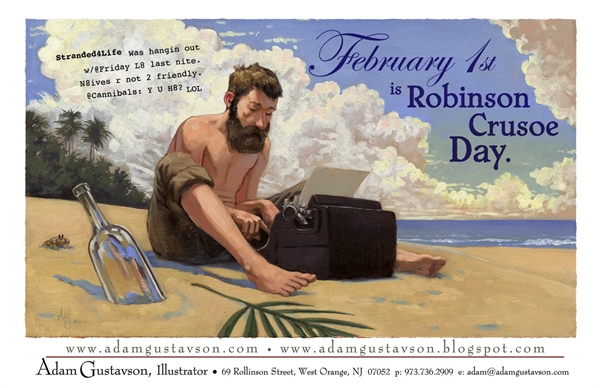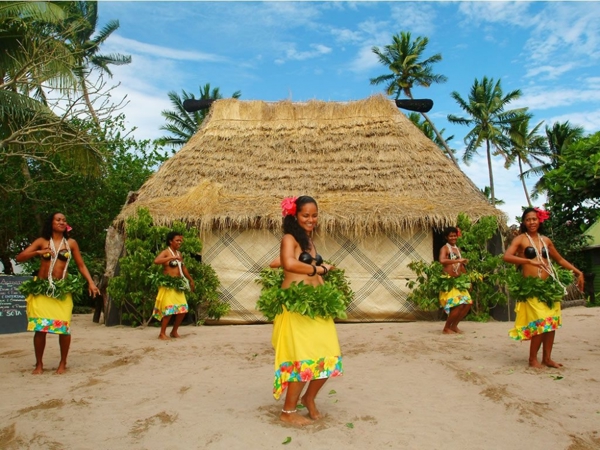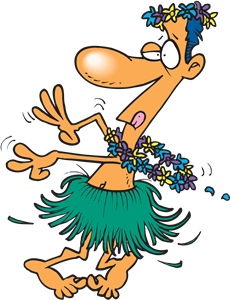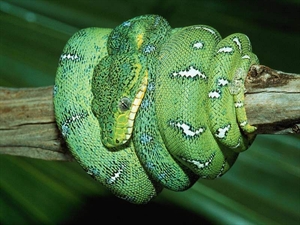Robinson Crusoe Day 2025 is on Saturday, February 1, 2025: what is the novel Robinson Crusoe?
Saturday, February 1, 2025 is Robinson Crusoe Day 2025. The Rhinoceros Boy's Lament: It's Robinson Crusoe Day! It's Robinson Crusoe Day!

Robinson Crusoe is a novel by Daniel Defoe that was first published in 1719. The book is a fictional autobiography of the title character—a castaway who spends 28 years on a remote tropical island near Trinidad, encountering cannibals, captives, and mutineers before being rescued.
The story was perhaps influenced by Alexander Selkirk, a Scottish castaway who lived for four years on the Pacific island called "Más a Tierra" (in 1966 its name was changed to Robinson Crusoe Island), Chile. The details of Crusoe's island were probably based on the Caribbean island of Tobago, since that island lies a short distance north of the Venezuelan coast near the mouth of the Orinoco river, in sight of Trinidad. It is also likely that Defoe was inspired by the Latin or English translations of Ibn Tufail's Hayy ibn Yaqdhan, an earlier novel also set on a desert island. Another source for Defoe's novel may have been Robert Knox's account of his abduction by the King of Ceylon in 1659 in "An Historical Account of the Island Ceylon," Glasgow: James MacLehose and Sons (Publishers to the University), 1911. Although inspired by a real life event, it was the first notable work of literature where the story was independent of mythology, history, legends, or previous literature.
Robinson Crusoe is a very long book, but the novel can, more or less, be broken down into three major movements.
Part I: Before the Island
Before landing on the island, Crusoe's father wants him to be a good, middle-class guy. Crusoe, who wants nothing more than to travel around in a ship, is definitely not into this idea. He struggles against the authority of both his father and God and decides to thumb his nose at both by going adventuring on the sea instead.
After sailing around for a while, he makes a bit of money in trade, but then is captured and made into a slave off the coast of Africa. Here he befriends a young man named Xury, with whom he escapes from captivity.
Picked up by a Portuguese sailing captain, Crusoe makes it to Brazil where he buys a sugar plantation. He does fairly well financially, but soon becomes involved in a venture to procure slaves from Africa. On the voyage there he gets shipwrecked and is left as the only survivor on a deserted island.
Part II: Life on the Island
This portion of the novel is dedicated to Crusoe's time alone on the island. He builds three main structures: his initial shelter, his country home on the opposite side of the island, and his guns and ammo fort in the woods. He spends his time planting corn, barley, and rice. He learns to make bread. He builds furniture, weaves baskets, and makes pots. Crusoe also raises goats and tends to his little animal family of cats, dogs, and a parrot. Most importantly, though, Crusoe becomes stronger in his religious faith, eventually submitting to the authority of God. He devotes himself to much religious reflection and prayer.
Part III: Escape from the Island
In final section of the book, Crusoe sees a footprint on the shore one day and learns that he's actually not alone on the island. There are also (gasp!) cannibals. Crusoe struggles with the question of whether or not he should take revenge on them. Eventually, he meets with Friday, a native man whom he is able to rescue from the cannibals. Crusoe teaches Friday English and converts him to Christianity. The two become like father and son (more or less). Friday and Crusoe also rescue a Spaniard and Friday's father from a different group of cannibals.
Eventually, an English longboat full of sailors lands on the island. Crusoe learns that the men have mutinied against their captain. After Crusoe helps restore order to the ship, the men and captain pledge allegiance to Crusoe and agree to take him home. Crusoe then returns to Europe with Friday, where he comes into a great deal of money from his sugar plantations. Crusoe gets married and eventually revisits the island in his late years. The novel ends with promise of more adventures for him in the sequel.
Robinson Crusoe??
Hi, just lemme give you some background info before I begin. Robinson Crusoe is not only about the story of a man on an island, but also about the Protestant work ethic. It was during a time of travel and colonization for many of the European countries and several people had views about colonization. The 2 specific questions you asked relate directly to the theme of religion and colonization.
1. Crusoe catalogs the events because he’s making a type of log that hints at his desire to colonize the island. Note how “merchant-like” his actions are. Lots of the things he records are like checks and balances, debit and credit. These are big hints to the idea that Defoe has about capitalism (not the modern one we use today but another type) and how it has been supported by his religion. (It’s like a type of justification for colonization but a bit complex). Basically, anything bounteous has been given by God and should be used effectively, to make profit. He’s resourceful. Like the capitalist.
2. The discovery is important because he first thinks that God has provided him with the corn but later he reflects back on it and realizes that it could have been by there by accident, like it fell into the sand and then overtime grew into corn stalks. This sheds a bit of doubt on the religious view that Crusoe initially had about it. (Crusoe basically uses “God” and “Christianity” to justify all that ever happens to him – there is a lot of religious nature to the work) He thought that God made it happen but later changes his mind. It’s a bit unusual and an interesting departure from the religious Crusoe, isn’t it?
Hope that helps!

Robinson Crusoe - Synopsis. .?
"Plot Overview
Robinson Crusoe is an Englishman from the town of York in the seventeenth century, the youngest son of a merchant of German origin. Encouraged by his father to study law, Crusoe expresses his wish to go to sea instead. His family is against Crusoe going out to sea, and his father explains that it is better to seek a modest, secure life for oneself. Initially, Robinson is committed to obeying his father, but he eventually succumbs to temptation and embarks on a ship bound for London with a friend. When a storm causes the near deaths of Crusoe and his friend, the friend is dissuaded from sea travel, but Crusoe still goes on to set himself up as merchant on a ship leaving London. This trip is financially successful, and Crusoe plans another, leaving his early profits in the care of a friendly widow. The second voyage does not prove as fortunate: the ship is seized by Moorish pirates, and Crusoe is enslaved to a potentate in the North African town of Sallee. While on a fishing expedition, he and a slave boy break free and sail down the African coast. A kindly Portuguese captain picks them up, buys the slave boy from Crusoe, and takes Crusoe to Brazil. In Brazil, Crusoe establishes himself as a plantation owner and soon becomes successful. Eager for slave labor and its economic advantages, he embarks on a slave-gathering expedition to West Africa but ends up shipwrecked off of the coast of Trinidad.
Crusoe soon learns he is the sole survivor of the expedition and seeks shelter and food for himself. He returns to the wreck’s remains twelve times to salvage guns, powder, food, and other items. Onshore, he finds goats he can graze for meat and builds himself a shelter. He erects a cross that he inscribes with the date of his arrival, September 1, 1659, and makes a notch every day in order never to lose track of time. He also keeps a journal of his household activities, noting his attempts to make candles, his lucky discovery of sprouting grain, and his construction of a cellar, among other events. In June 1660, he falls ill and hallucinates that an angel visits, warning him to repent. Drinking tobacco-steeped rum, Crusoe experiences a religious illumination and realizes that God has delivered him from his earlier sins. After recovering, Crusoe makes a survey of the area and discovers he is on an island. He finds a pleasant valley abounding in grapes, where he builds a shady retreat. Crusoe begins to feel more optimistic about being on the island, describing himself as its “king.” He trains a pet parrot, takes a goat as a pet, and develops skills in basket weaving, bread making, and pottery. He cuts down an enormous cedar tree and builds a huge canoe from its trunk, but he discovers that he cannot move it to the sea. After building a smaller boat, he rows around the island but nearly perishes when swept away by a powerful current. Reaching shore, he hears his parrot calling his name and is thankful for being saved once again. He spends several years in peace.
One day Crusoe is shocked to discover a man’s footprint on the beach. He first assumes the footprint is the devil’s, then decides it must belong to one of the cannibals said to live in the region. Terrified, he arms himself and remains on the lookout for cannibals. He also builds an underground cellar in which to herd his goats at night and devises a way to cook underground. One evening he hears gunshots, and the next day he is able to see a ship wrecked on his coast. It is empty when he arrives on the scene to investigate. Crusoe once again thanks Providence for having been saved. Soon afterward, Crusoe discovers that the shore has been strewn with human carnage, apparently the remains of a cannibal feast. He is alarmed and continues to be vigilant. Later Crusoe catches sight of thirty cannibals heading for shore with their victims. One of the victims is killed. Another one, waiting to be slaughtered, suddenly breaks free and runs toward Crusoe’s dwelling. Crusoe protects him, killing one of the pursuers and injuring the other, whom the victim finally kills. Well-armed, Crusoe defeats most of the cannibals onshore. The victim vows total submission to Crusoe in gratitude for his liberation. Crusoe names him Friday, to commemorate the day on which his life was saved, and takes him as his servant.
Finding Friday cheerful and intelligent, Crusoe teaches him some English words and some elementary Christian concepts. Friday, in turn, explains that the cannibals are divided into distinct nations and that they only eat their enemies. Friday also informs Crusoe that the cannibals saved the men from the shipwreck Crusoe witnessed earlier, and that those men, Spaniards, are living nearby. Friday expresses a longing to return to his people, and Crusoe is upset at the prospect of losing Friday. Crusoe then entertains the idea of making contact with the Spaniards, and Friday admits that he would rather die than lose Crusoe. The two build a boat to visit the cannibals’ land together. Before they have a chance to leave, they are surprised by the arrival of twenty-one cannibals in canoes. The cannibals are holding three victims, one of whom is in European dress. Friday and Crusoe kill most of the cannibals and release the European, a Spaniard. Friday is overjoyed to discover that another of the rescued victims is his father. The four men return to Crusoe’s dwelling for food and rest. Crusoe prepares to welcome them into his community permanently. He sends Friday’s father and the Spaniard out in a canoe to explore the nearby land.
Eight days later, the sight of an approaching English ship alarms Friday. Crusoe is suspicious. Friday and Crusoe watch as eleven men take three captives onshore in a boat. Nine of the men explore the land, leaving two to guard the captives. Friday and Crusoe overpower these men and release the captives, one of whom is the captain of the ship, which has been taken in a mutiny. Shouting to the remaining mutineers from different points, Friday and Crusoe confuse and tire the men by making them run from place to place. Eventually they confront the mutineers, telling them that all may escape with their lives except the ringleader. The men surrender. Crusoe and the captain pretend that the island is an imperial territory and that the governor has spared their lives in order to send them all to England to face justice. Keeping five men as hostages, Crusoe sends the other men out to seize the ship. When the ship is brought in, Crusoe nearly faints.
On December 19, 1686, Crusoe boards the ship to return to England. There, he finds his family is deceased except for two sisters. His widow friend has kept Crusoe’s money safe, and after traveling to Lisbon, Crusoe learns from the Portuguese captain that his plantations in Brazil have been highly profitable. He arranges to sell his Brazilian lands. Wary of sea travel, Crusoe attempts to return to England by land but is threatened by bad weather and wild animals in northern Spain. Finally arriving back in England, Crusoe receives word that the sale of his plantations has been completed and that he has made a considerable fortune. After donating a portion to the widow and his sisters, Crusoe is restless and considers returning to Brazil, but he is dissuaded by the thought that he would have to become Catholic. He marries, and his wife dies. Crusoe finally departs for the East Indies as a trader in 1694. He revisits his island, finding that the Spaniards are governing it well and that it has become a prosperous colony."
I reccommend bookmarking the sparknotes website for any help you ever need for a book. Plot overviews as well as character lists and chapter-by-chapter synopsis are avaliable for almost any book you could imagine. They sure help when trying to prepare for a test on a book you don't understand or have had trouble finishing. Good luck! :)

















